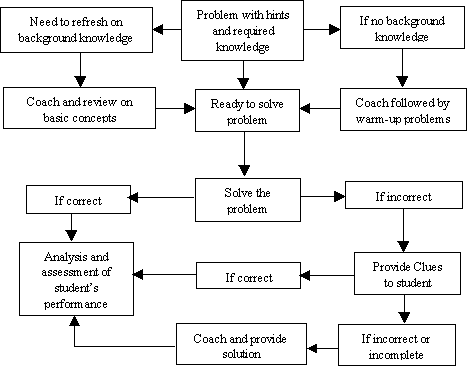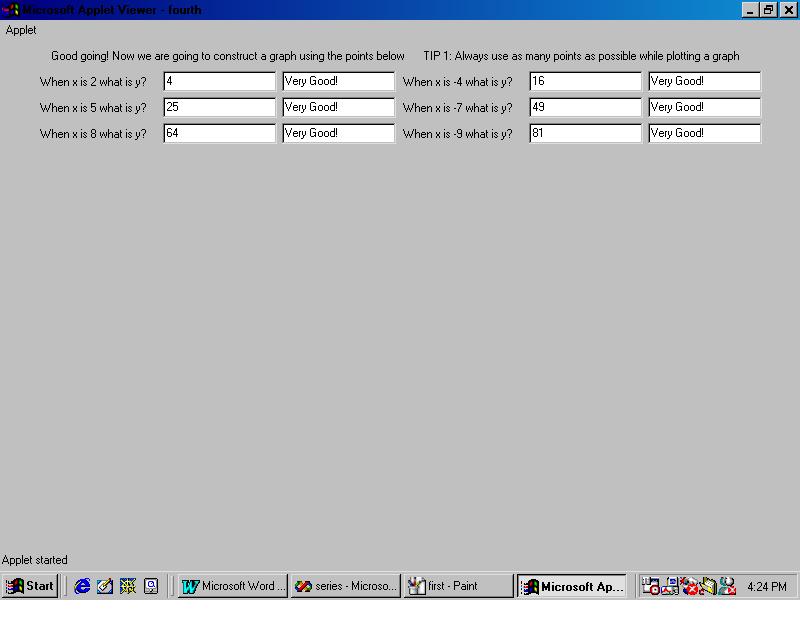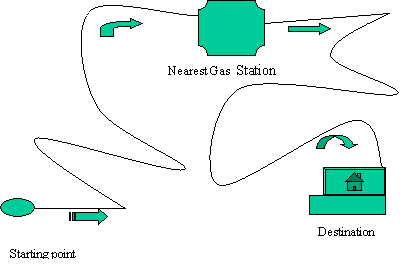Web Based Learning Environment for Functions and Graphs
Stephen U. Egarievwe,1 Bilikiss O.
Adebiyi,1 Obafemi S. Onafowokan,2 Donette R. Coke,1 Mohammed R. Karim,1 Kristy V. Rigby,1 Olubanke M. Adetunji3
1Center for Internet Based Education and Research, Fisk
University, Nashville, TN, United States of America
2College of Business, Middle Tennessee State University, Murfreesboro, TN, United States of America
3School of Nursing, Tennessee State University, Nashville, TN, United States of America
© EURODL 2000
Introduction
Design and Implementation
An Example Used in the Demo
Conclusions
References
Abstract
The advent of modern computer technology and the Internet has triggered new approaches to the teaching-learning process. This is particularly useful in abstract domains such as functions and graphs. We have designed the framework for a web based learning environment in the domains of function and graph. The key approach involves presenting students with problems they are familiar with in their everyday life, and requiring them to solve the problem using functions and graph. In guiding the students to the solution, they learn basic function and graph concepts/principles and how to apply them in problem solving.
Keywords: Internet based learning, Computer assisted instruction, JAVA, HTML, Functions and graphs, Mathematics.
1 Introduction
The process of teaching and learning has evolved greatly over the years, improving with time and making use of available tools and technology to enhance teaching methods. With the advent of the World Wide Web, it is now possible to offer teaching/learning process outside a conventional classroom. The Internet provide the advantage of providing education to people in remote areas, and to a large number of people the same time at different geographical locations. In this paper we present a preliminary framework for a web based learning environment in the domains of function and graph for upper levels high school students. The major aims of the system are:
- To effectively communicate the concepts of functions and graphs to students.
- To provide a function/graph learning environment to a large number of students and incorporate Internet conferencing for group work and projects.
- Increase the scope of applications of algebra, specifically functions and graphs, to include more activities that are familiar to students.
2 Design and Implementation
The system is in its early stage of development. The basic design is shown in Fig. 1. Students are first given a problem with hints on the mathematical background and knowledge that will be helpful for the solution. Students who are familiar with the necessary concepts will go ahead and apply them in solving the problems. Those who need to refresh their memory will have the option of going to the coach section. Students who do not have the background knowledge will be provided with coaching followed by simpler and short problems. The short problems will be related to the major problem and offer clues to its solution. The coach and clue sessions will use simulation/visualization in presenting materials to students. The problem solving section involves several procedures such as identification of parameters and relationships between them, solving equations and plotting graphs. This section also has clues and help sessions whenever necessary while the student is solving the problem.

Fig. 1: The basic design of the web based learning environment.
Some components of the system have been implemented using HTML and JAVA [1,2]. These include the development of problems and help sessions based on interviews with students. The interviews and preliminary tests of various components on the system are also to enable us identify ways of communicating effectively to the students. An example of a coach session guiding a student through preparing a table of values to be used in plotting a graph is shown in Fig. 2.

Fig. 2: An example of a coach session guiding a student through preparing a table of values to be used in plotting a graph
3 An Example Used in the Demo
Here is a problem presented to students. You and three friends would like to go to a party. You have two cars, one a Honda Prelude with 3 gallons of gas and a gas mileage of 25 miles/gallon and a Jeep Cherokee with 5 gallons of gas and a mileage of 18 miles/gallon. The nearest gas station is 80 miles away and the party is 120 miles away. Which car will you use?

Fig. 3: This diagram is an illustration explaining an example of moving from one point to another with limited resources.
The students are given a scenario about how they are at point A (starting point) and the need to get to point C (the destination). Point B is the nearest gas station. They are asked to use function and graph concepts to solve the problem. To make the problem a little more complicated we used a Jeep Cherokee and a Honda Prelude with different gas consumption rates. A student who wants to save money on gas may pick the Honda Prelude. Correct use of functions and graphs to evaluate the parameters involved in this problem will show that the Jeep Cherokee is the realistic choice because the Honda Prelude will run out of gas before it could reach the nearest gas station.
4 Conclusions
We have presented a preliminary framework for a web based learning environment in the domains of function and graph that is being developed for upper levels high school students. Our initial interview with students showed they view mathematics as a very abstract domain and have difficulties in learning concepts and applying them to real life problems. We found that inability to get the correct answer to problems and getting stuck when using textbooks easily bring discouragements to students. The web/computer based learning environment we are developing will avoid such problems by guiding the student to the solution through coaching, clue problems, and help sessions.
Acknowledgements
This work was partially supported by the NSF-MII GRANT #9810673, and NASA through the Fisk-NASA Center for Photonic Materials and Devices.
References
[1] Deitel, H.M. and P.J. Deitel. JAVA: how to
program, 2nd ed. Prentice Hall, New Jersey. 1997.
[2] Holzner, S. JAVA black book. Coriolis Technology Press, Arizona. 2000
Authors
Stephen U.
Egarievwe, Ph.D., Assistant Professor of Physics and Computer Science
Fisk University, Center for Internet Based Education and Research
1000 17th Avenue North, Nashville, TN 37208, USA
segariev@dubois.fisk.edu
http://ciberlab.fisk.edu/egarievwe
Bilikiss O.
Adebiyi, Student Research Assistant
Fisk University, Dept of Mathematics and Computer Science, Nashville, TN 37208, USA
Obafemi
Onafowokan, Graduate Research Assistant
Department of Computer Information Systems, Middle Tennessee State University
Murfreesboro, TN 37132, USA
Donette R.
Coke, Student Research Assistant
Fisk University, Dept of Mathematics and Computer Science, Nashville, TN 37208,
USA
Mohammed R.
Karim, Assistant Professor of Mathematics
Fisk University, Dept of Mathematics and Computer Science, Nashville, TN 37208,
USA
Kristy V.
Rigby, Student Research Assistant
Fisk University, Dept of Mathematics and Computer Science, Nashville, TN 37208,
USA
Olubanke M.
Adetunji, Student Research Assistant
School of Nursing, Tennessee State University, Nashville, TN 37209, USA

